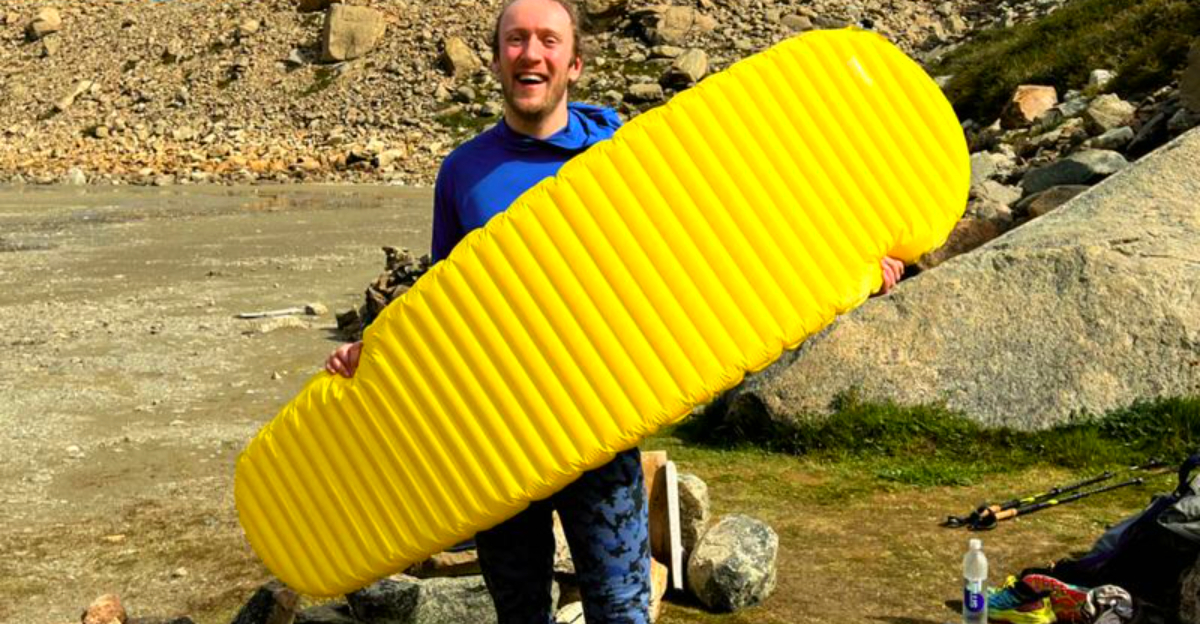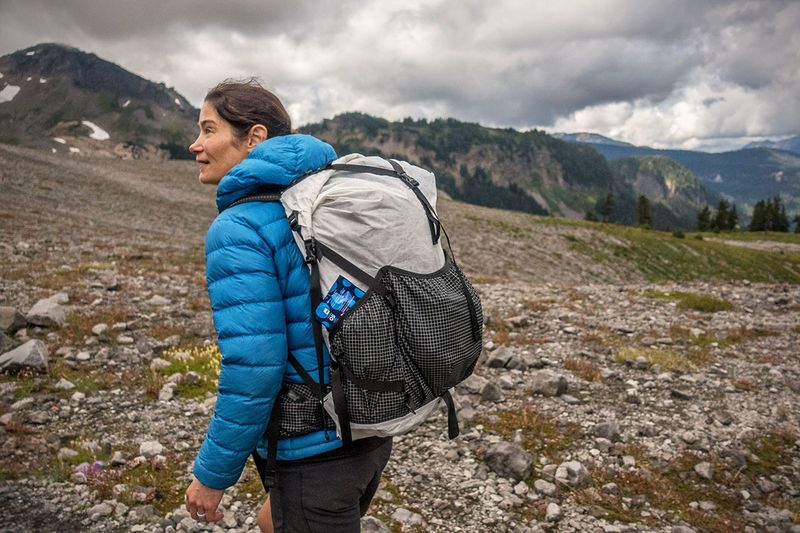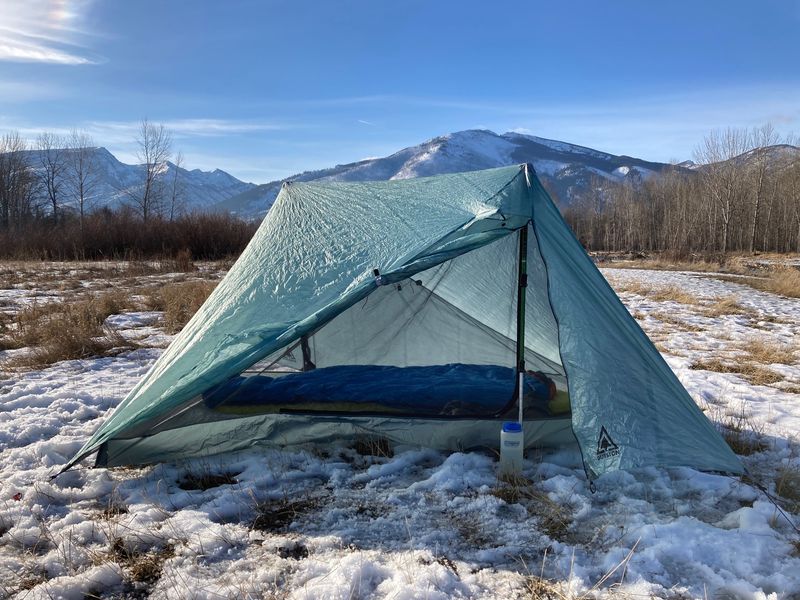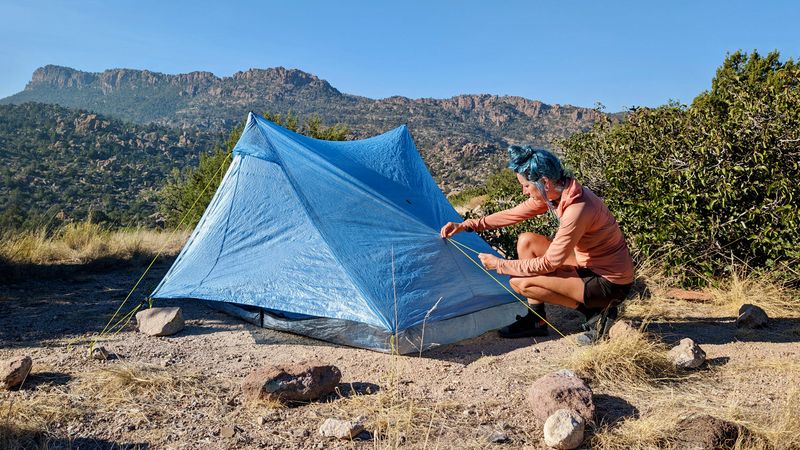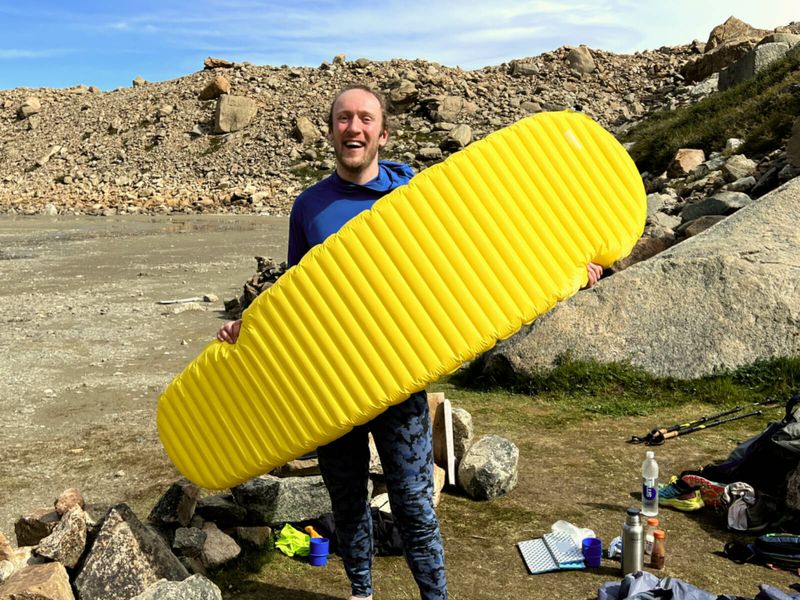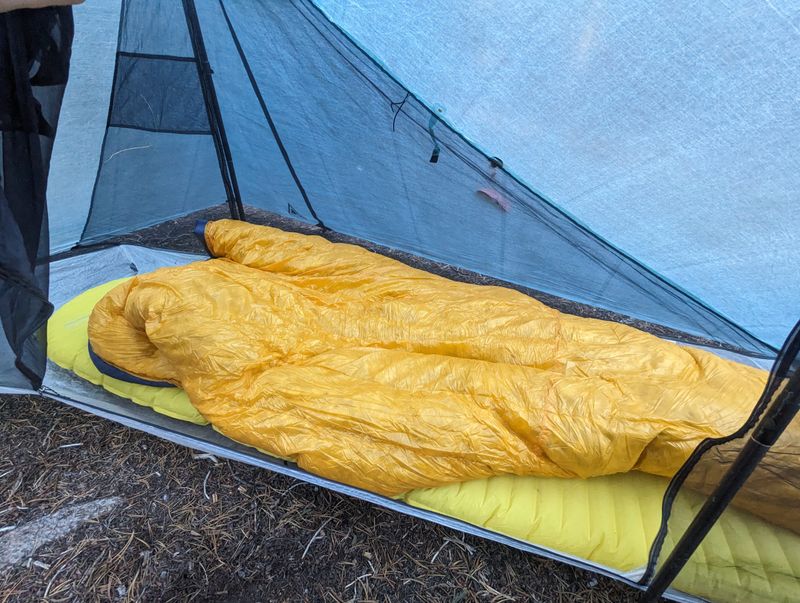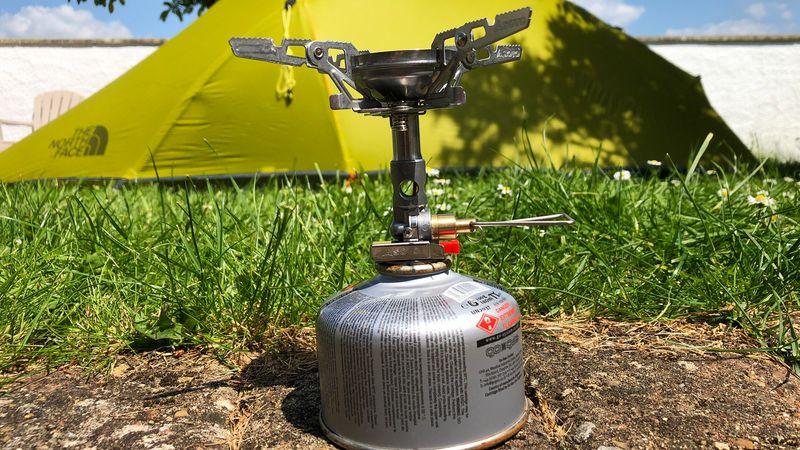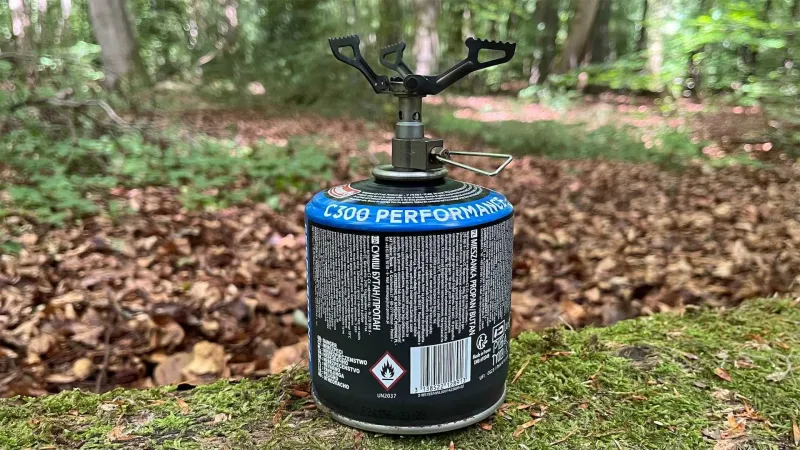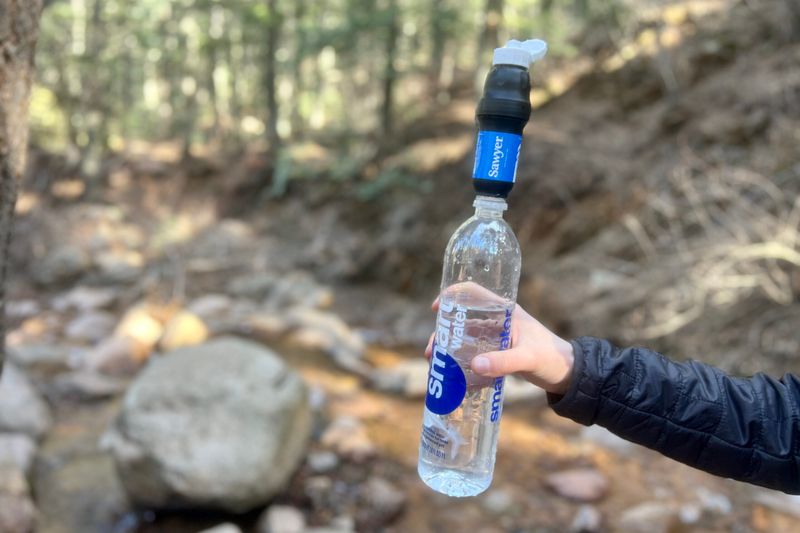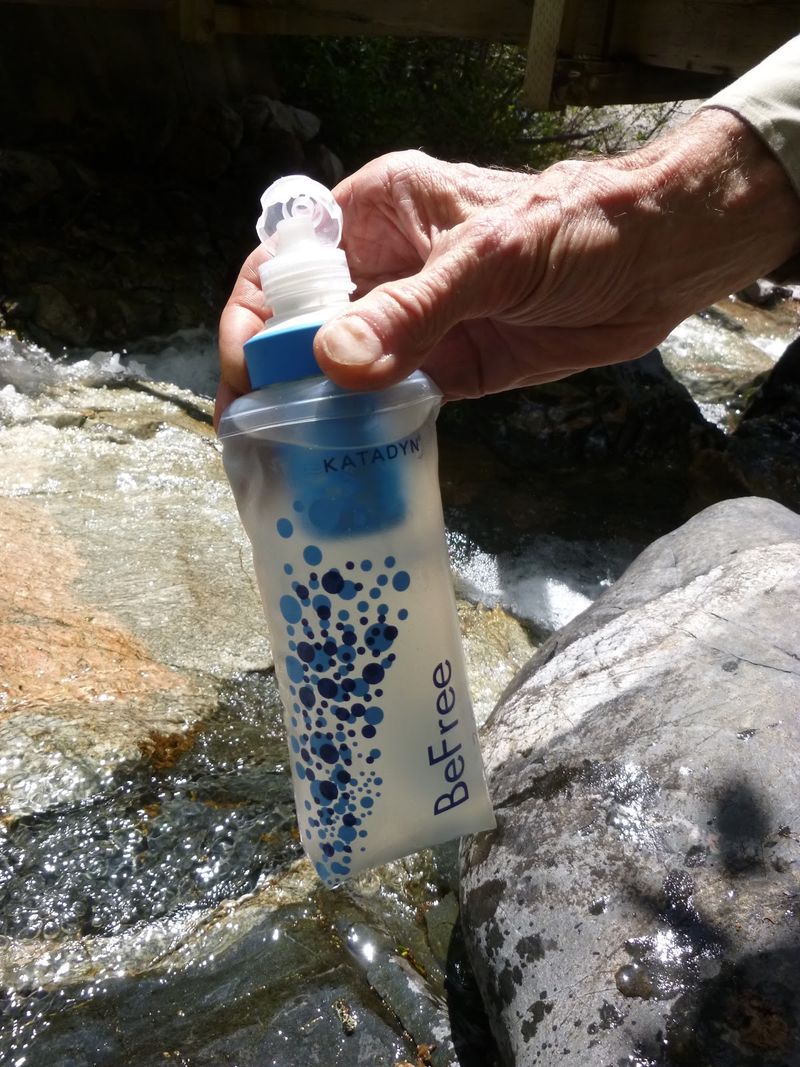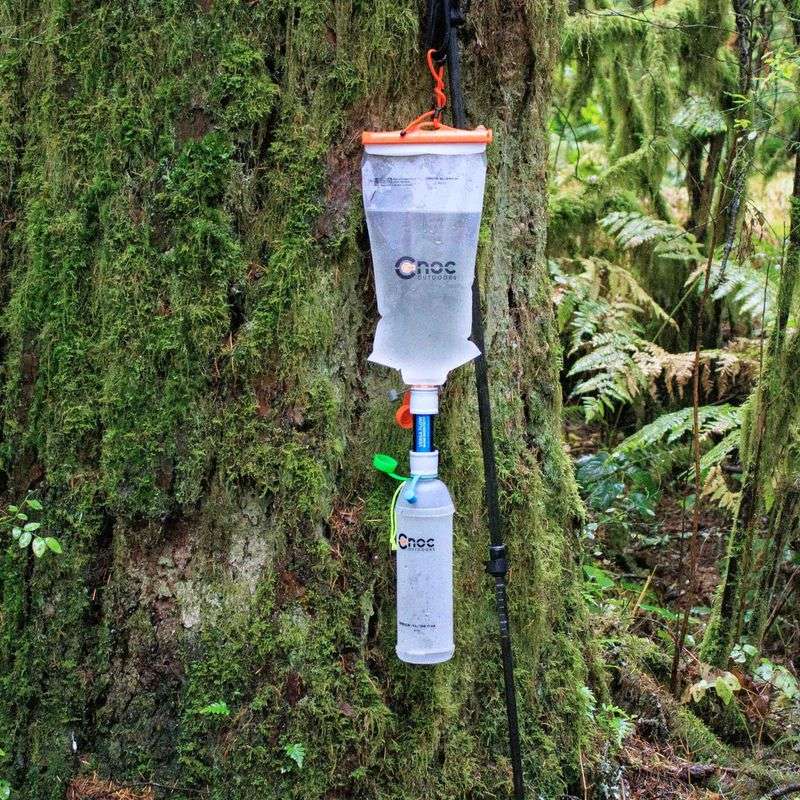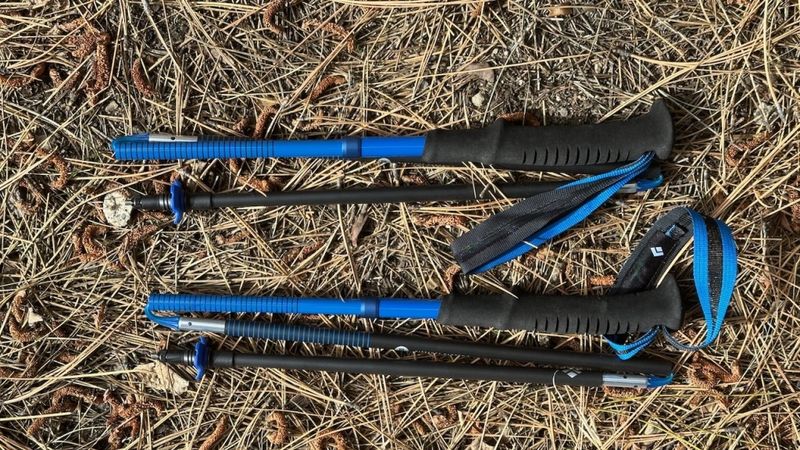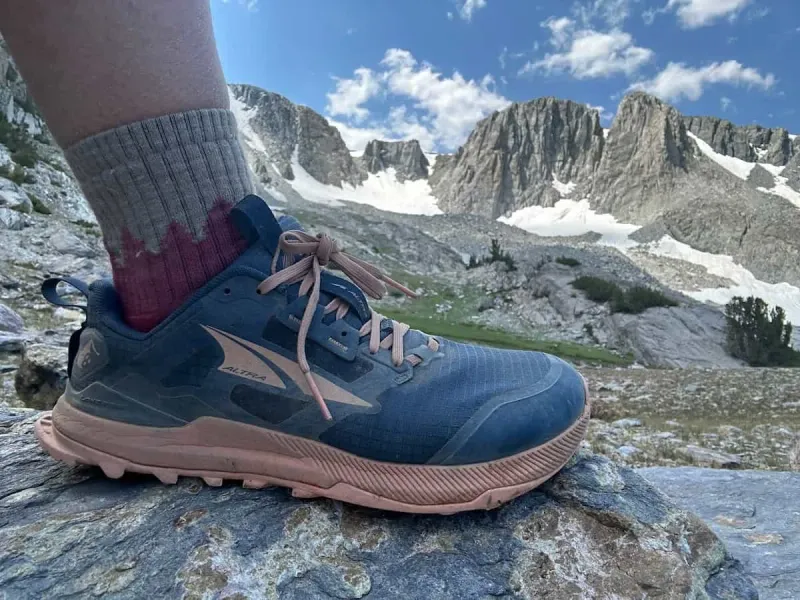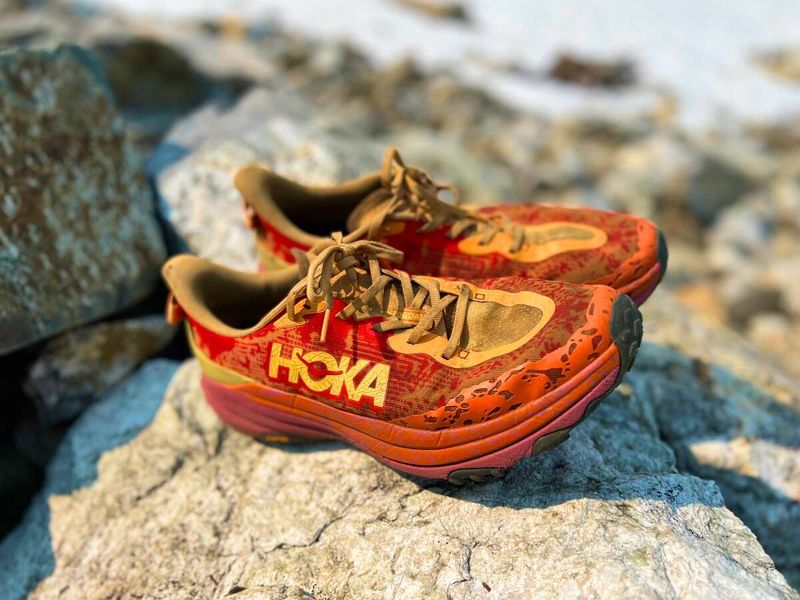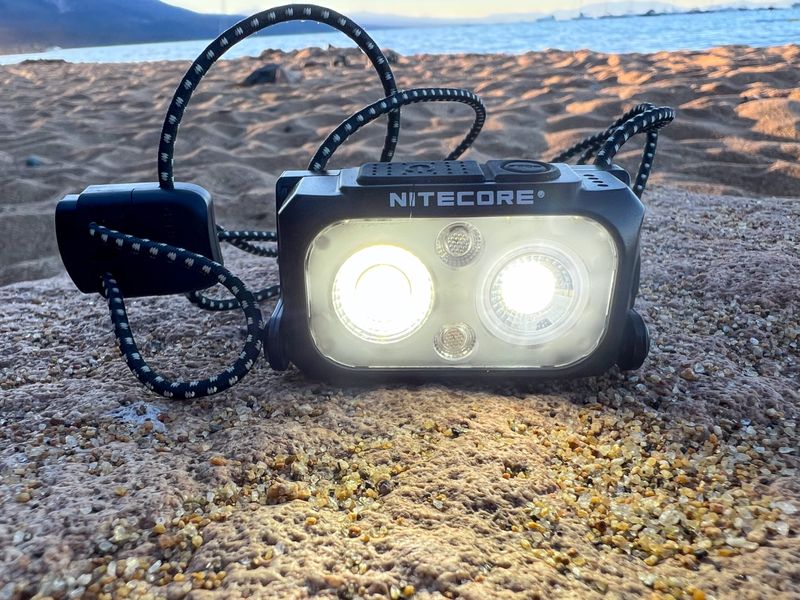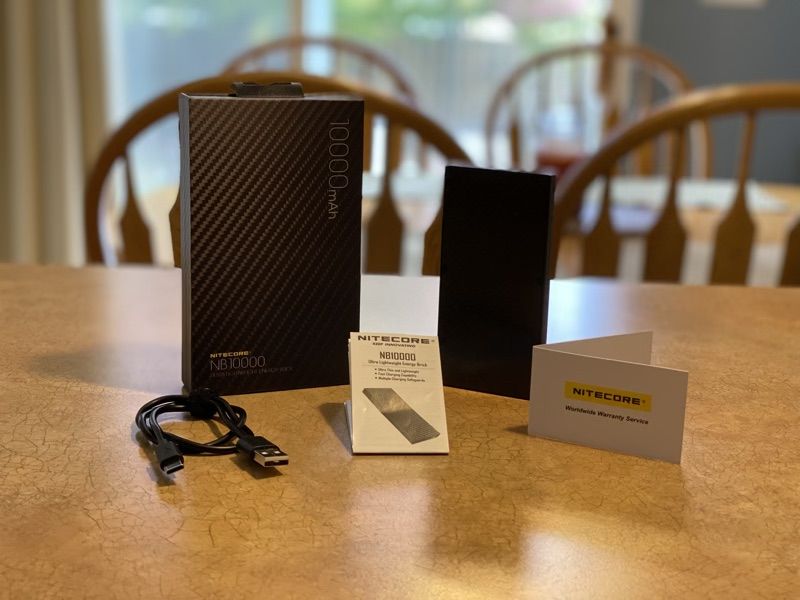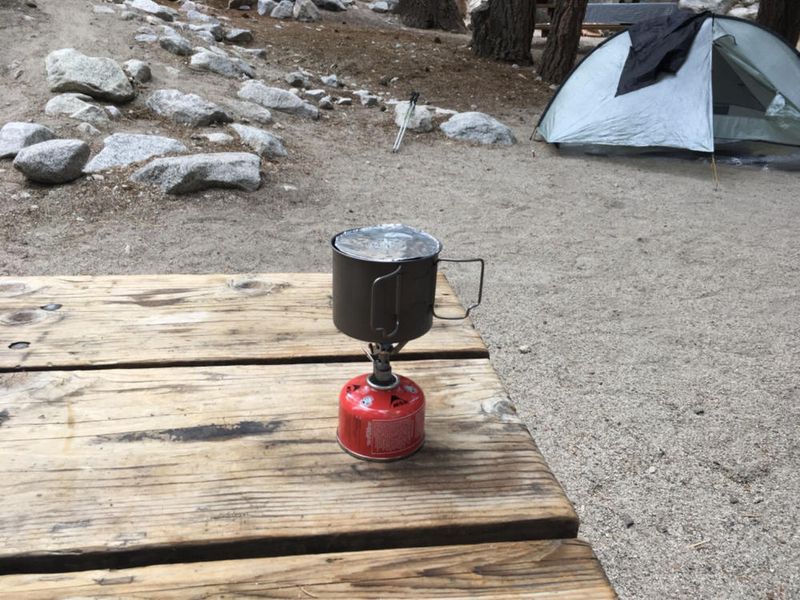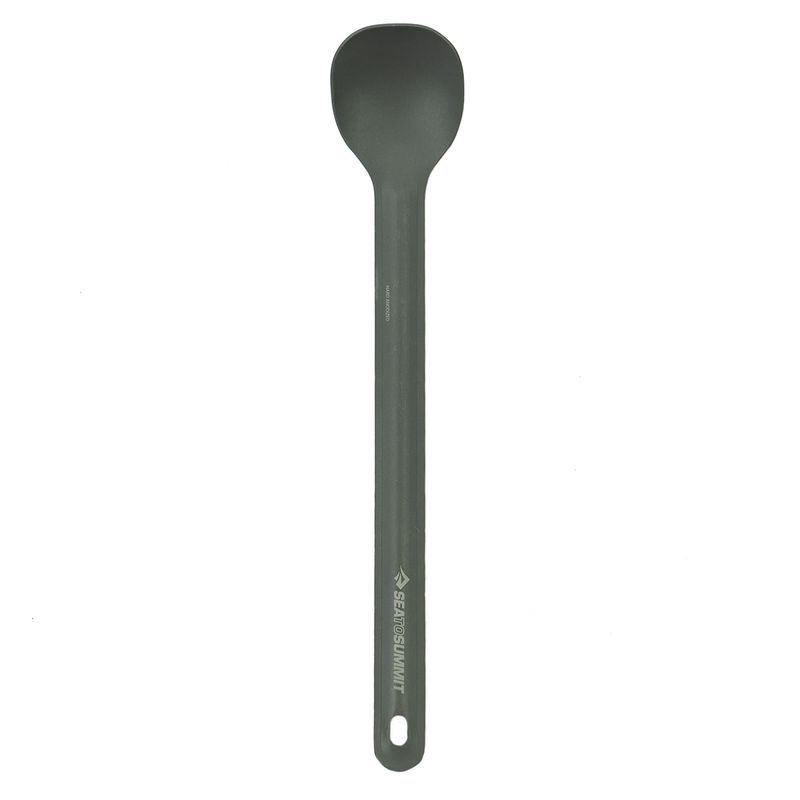Long-distance hiking demands gear that won’t weigh you down mile after mile. Every ounce matters when you’re carrying your home on your back through mountains, deserts, and forests for weeks or months at a time. The right lightweight equipment can transform a grueling trek into an enjoyable adventure, helping you cover more ground with less fatigue and fewer aches.
1. Hyperlite Mountain Gear Southwest (40/55/70L) — Ultralight Workhorse Pack
Carrying everything you need for months shouldn’t feel like hauling bricks. Hyperlite’s Southwest series uses fully woven 200D Dyneema—a material stronger than steel by weight—to create a pack that laughs at rain and brush while keeping your shoulders happy.
Available in three volumes (40, 55, and 70 liters), this pack family earned its reputation on the Appalachian Trail and Pacific Crest Trail. The simple exterior design means fewer straps to snag on branches, while strategically placed pockets keep your essentials accessible.
Originally dubbed the “3400 Southwest” for the 55-liter version, this workhorse handles thru-hike abuse without complaint. Weather-resistant construction keeps your gear dry during unexpected storms, making it a favorite among long-distance hikers who refuse to compromise on durability or weight.
2. Durston X-Mid Pro 2 — The Crazy-Light 2-Person Shelter
At just 17.9 ounces, this tent defies the usual trade-off between weight and livable space. Built from DCF (Dyneema Composite Fabric), the X-Mid Pro 2 offers a full-size shelter that two people can actually stretch out in comfortably.
Trekking-pole tents often sacrifice storm protection for grams saved, but not this one. Excellent stormworthiness comes from smart geometry that sheds wind and rain while maintaining headroom. The pitch is surprisingly simple, even after a long day on trail.
Many ultralight shelters force you into a cramped fetal position by nightfall. This design respects your need for elbow room and gear storage without adding penalty ounces. Durston Gear built a reputation on thoughtful engineering, and the X-Mid Pro 2 showcases that philosophy beautifully.
3. Zpacks Duplex Zip — The DCF Classic, Refined
Some gear earns legendary status through years of proven trail performance. The Zpacks Duplex became that shelter, and the Zip version refines the formula with zippered doors that many hikers requested.
Weighing 20.4 ounces, this two-door, two-vestibule design lets partners come and go without awkward contortions. Recent 2025 reviews confirm the specs hold true in real-world conditions. The DCF construction handles everything from desert sun to mountain storms.
Zpacks pioneered ultralight DCF shelters when most manufacturers still used heavy nylon. Their experience shows in the details—seamless corners that resist tears, thoughtful guy-out points for stability, and vestibules sized for actual backpacks. Thousands of thru-hikers have trusted their sleep to this tent, and it rarely disappoints.
4. Therm-a-Rest NeoAir XLite NXT — Warmth-to-Weight Leader in Pads
Cold ground steals body heat faster than most hikers realize. A quality sleeping pad isn’t luxury—it’s survival equipment that determines whether you wake refreshed or shivering.
The NeoAir XLite NXT improves on its predecessor with better warmth, thickness, and blessedly quieter fabric. At around 12.5 to 13 ounces for a regular size, it packs down to roughly a Nalgene bottle’s dimensions. The high R-value handles three-season conditions and pushes into shoulder-season trips.
Previous XLite models earned complaints about crinkly noise every time you shifted position. Therm-a-Rest listened and refined the materials without sacrificing the impressive warmth-to-weight ratio. Your tent partner will thank you, and your back will too after sleeping on this cushioned cloud instead of rocky ground.
5. Enlightened Equipment Enigma Quilt (20°F/-6°C) — Customizable Top Quilt
Why carry a full sleeping bag when half the material just compresses uselessly beneath you? Quilts ditch the back insulation, hood, and zipper—features that add weight without adding warmth when you’re lying on a pad.
The Enigma features a sewn footbox that keeps your feet cozy without the fuss of zippers or drawstrings. Available with 850 or 950-fill down in various sizes and temperature ratings, you can customize it precisely to your needs. The 20°F version hits the sweet spot for three-season hiking.
Pair this with a high R-value sleeping pad for a complete insulation system that weighs far less than traditional bags. Enlightened Equipment pioneered cottage-industry quilts, and their attention to detail shows in the draft collars and attachment systems that keep cold air out on breezy nights.
6. Soto WindMaster (with 4Flex) — Best All-Round Canister Stove in Wind
Ever watched your fuel disappear while wind scatters your stove’s flame everywhere except under your pot? The WindMaster’s concave burner head solves that frustrating problem with engineering that channels heat efficiently even when gusts howl.
At approximately 86 grams with the 4Flex pot support (60.6g stove plus 26.3g support), this setup delivers excellent simmer control for real cooking, not just boiling water. Long-trail hikers praise its reliability across diverse conditions.
Many ultralight stoves sacrifice functionality for grams saved, forcing you to char dinner or wait forever for water to boil. Soto balanced the equation beautifully here. The 4Flex arms stabilize larger pots without tipping, and the burner performs consistently from sea level to high altitude, making it a genuine all-rounder.
7. BRS-3000T — The Gram-Counter’s ‘Just-Boil-Water’ Burner
For hikers who eat cold-soaked meals and only need hot coffee or instant noodles, spending big money on a fancy stove makes little sense. Enter the BRS-3000T: dirt-cheap, insanely light, and perfectly adequate for fair-weather boils.
Weighing just 0.9 ounces (25 to 26 grams), this titanium burner disappears in your cook kit. Budget-conscious thru-hikers love the price point—you can buy several as backups for less than one premium stove costs.
Fair warning: wind performance lags far behind the WindMaster, and simmer control is basically nonexistent. But if you’re boiling water for freeze-dried meals in protected campsites, those limitations rarely matter. Thousands of Appalachian Trail hikers have made it work just fine, proving you don’t always need the fanciest gear.
8. Sawyer Squeeze — The Long-Trail Default Water Filter
Clean water determines survival, plain and simple. The Sawyer Squeeze became the default choice for long-distance hikers because it balances light weight, reliability, and significantly better flow than the smaller Mini or Micro versions.
Backed by a lifetime guarantee, this filter removes bacteria and protozoa down to 0.1 microns. You can squeeze it like a bottle, use it inline with a hydration bladder, or set up a gravity system. Versatility matters when conditions change daily.
Pro tip: pair it with a CNOC Vecto bag for easier filling and gravity filtering at camp. The Squeeze earned its reputation through thousands of successful thru-hikes where clean water meant the difference between finishing strong and getting sidelined by waterborne illness. It just works, mile after mile.
9. Katadyn BeFree 1.0 L — Fastest Squeeze When Flow Is King
Sometimes you just need water NOW—after a brutal climb in blazing heat, waiting for slow filtration feels like torture. The BeFree delivers flow rates up to 2 liters per minute through its 0.1-micron hollow fiber membrane.
At roughly 2.3 ounces for the bottle and filter system, it’s impressively light. The wide-mouth soft flask makes scooping from shallow streams effortless, a huge advantage over narrow-mouth bottles that require awkward angles or deeper water.
Katadyn’s official specs confirm what trail users report: this thing flows fast when you’re desperately thirsty. The soft flask doubles as a hydration bottle you can drink from directly after filtering. Some hikers prefer the BeFree’s speed over the Sawyer’s versatility, especially on hot sections where hydration becomes the top priority.
10. CNOC Vecto 2 L (28 mm) — The Ultralight Gravity Bag & Water Tote
Filling narrow-mouth water bottles from trickling streams tests your patience and balance. The Vecto’s dual-opening design—combining a wide slider with a 28mm threaded cap—transforms dirty-water collection from frustrating chore to quick task.
Weighing just 76 grams (2.6 ounces) for the standard version or 92 grams for the tougher VectoX, this bag pairs perfectly with Sawyer Squeeze filters for gravity setups. Hang it from a tree, let physics work, and return to clean water without hand-cramping squeezing.
The wide slider opening lets you scoop water like a bucket, crucial when sources are shallow puddles rather than flowing creeks. Thru-hikers often carry one as both their dirty-water collector and camp water storage, appreciating how it collapses to nearly nothing when empty.
11. Black Diamond Distance Carbon Z — Feathery Trekking Poles
Trekking poles transform hiking biomechanics, reducing knee stress by up to 25 percent on descents while improving balance on tricky terrain. But only if they’re light enough that you’ll actually use them all day.
At approximately 10.4 ounces (295 grams) per pair, the Distance Carbon Z models disappear in your hands. The foldable, fixed-length design means no fiddling with adjustment mechanisms that freeze or fail. Fast-packers and thru-hikers love how these pack away quickly when scrambling or taking breaks.
Carbon fiber construction keeps weight minimal while maintaining the stiffness needed for serious support. Fixed lengths might seem limiting, but most hikers find their ideal size and never adjust anyway. These poles earn their reputation by doing exactly what’s needed without extra features that add weight.
12. Altra Lone Peak 8 — Zero-Drop Trail Shoes That Breathe & Splay
Blisters and black toenails plague long-distance hikers, often caused by shoes that squeeze toes into unnatural positions. Altra’s wide toe box lets your feet spread naturally with each step, while the zero-drop platform maintains your natural gait mechanics.
Weighing about 10.7 ounces for men and 9.1 ounces for women per shoe, the Lone Peak 8 brings 25mm of stack height without traditional heel-to-toe drop. This geometry has become a thru-hike staple for those who prefer flat, natural foot positioning.
Fit note: size up to account for foot swelling and sock thickness over long days. The breathable mesh handles hot sections well, though you’ll sacrifice some durability compared to leather boots. Many hikers go through multiple pairs on a thru-hike and consider it a worthwhile trade for the comfort these shoes deliver mile after mile.
13. Hoka Speedgoat 6 — Cushioned Alternative for Big-Mile Days
Not everyone thrives on minimal footwear. Some hikers need serious cushioning to handle rocky trails and 20-plus-mile days without their feet turning into throbbing lumps of pain.
The Speedgoat 6 delivers high stack height and aggressive traction that excels on technical descents. Many hikers report significantly less fatigue during long downhills compared to lower-profile shoes. The 2025 reviews consistently highlight comfort over marathon-length trail days.
Hoka built these shoes for mountain runners who punish their feet on brutal terrain, which translates perfectly to loaded backpacking demands. The trade-off comes in weight—these are heavier than minimalist options—but if cushioning prevents joint pain or stress injuries, those extra ounces pay dividends. Your knees might be the deciding vote between these and something lighter.
14. Nitecore NU25 (MCT/UL, USB-C) — Ultralight Rechargeable Headlamp
Fumbling with disposable batteries in the dark while trying to set up camp ranks among backpacking’s most annoying experiences. Rechargeable headlamps eliminate that hassle, and the NU25 does it at an impressively light 56 grams.
Pushing up to 400 lumens maximum output, this headlamp provides plenty of light for camp tasks, night hiking, or emergency situations. The USB-C charging matches modern power banks and phone cables, reducing the tangle of different cords in your pack.
Weight-conscious hikers consistently list the NU25 among their favorite pieces of gear for 2025. Red and white LED options preserve night vision while reading maps or star-gazing. The rechargeable battery lasts through typical nightly use for several days between charges, making it practical even on longer stretches between towns.
15. Nitecore NB10000 Gen2 — The Lightest 10k mAh Power Bank Most Hikers Carry
Phones, headlamps, and watches all demand power on trail, but lugging heavy battery bricks contradicts ultralight philosophy. The NB10000 Gen2 wraps 10,000 mAh of capacity in a carbon-fiber shell weighing just 150 grams (5.29 ounces).
That 20-watt output charges devices quickly during short town stops or lunch breaks. For most hikers, 10,000 mAh lasts three to five days of typical use—perfect for the stretch between resupply points.
Safety note: some older Anker models faced recalls in 2024 and 2025, so always verify your specific power bank model’s status. Nitecore’s engineering focused on the weight-to-capacity ratio that matters most for long-distance hiking. The carbon-fiber construction isn’t just for looks; it provides durability without the weight penalty of plastic or aluminum housings that other manufacturers use.
16. TOAKS 550 ml Ultralight Titanium Pot — Minimalist Cook Kit Core
Solo hikers don’t need family-sized cookware. A simple pot that boils water for freeze-dried meals and morning coffee covers 90 percent of backcountry cooking needs.
The TOAKS 550ml pot weighs just 54 to 60 grams (roughly 2.6 ounces with lid) thanks to 0.3mm titanium walls. It nests perfectly around a 110-gram gas canister, creating a compact cook system that disappears in your pack. Titanium won’t rust, dent easily, or impart metallic taste to your food.
Minimalist design means no folding handles or unnecessary features that add weight and failure points. This pot does one job exceptionally well: heating water efficiently. For hikers who cold-soak lunch and only cook dinner, this represents the perfect balance of function and weight savings in a cook kit.
17. Sea to Summit Alpha Light Long Spoon — The ‘One Utensil’ Solution
Short spoons force you to jam your hand deep into freeze-dried meal pouches, scraping knuckles and wasting food stuck in corners. The Alpha Light Long Spoon solves that annoying problem with extra reach that makes sense.
At just 12 grams, this hard-anodized aluminum utensil barely registers on your scale. The anodization prevents that metallic taste some cheaper aluminum spoons impart to food. One spoon handles every meal from breakfast oatmeal to dinner stew.
Many hikers carry knife-fork-spoon sets that never get fully used. Most trail cooking requires only a spoon, making the other utensils dead weight. This single-utensil approach embraces minimalism without sacrifice—you’ll reach the bottom of every meal pouch without frustration or waste, which matters when calories fuel your daily mileage.
